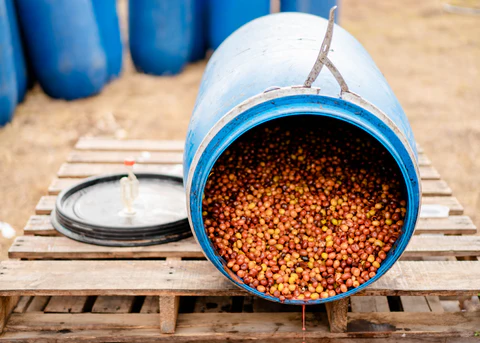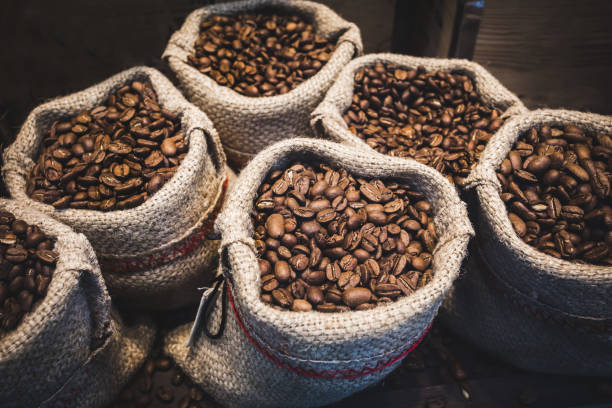When it comes to brewing a perfect cup of coffee, the debate between AeroPress vs Espresso machines is a hot topic among coffee enthusiasts. Each method has its unique characteristics, and choosing the right one depends on your personal preferences and coffee goals.
In this article, we’ll dive into the intricacies of both the AeroPress and espresso machines, helping you decide which brewing method suits your lifestyle and taste buds. So, whether you’re a fan of the quick, rich shot of espresso or the smooth, versatile brew from an AeroPress, read on to find out which one is right for you.
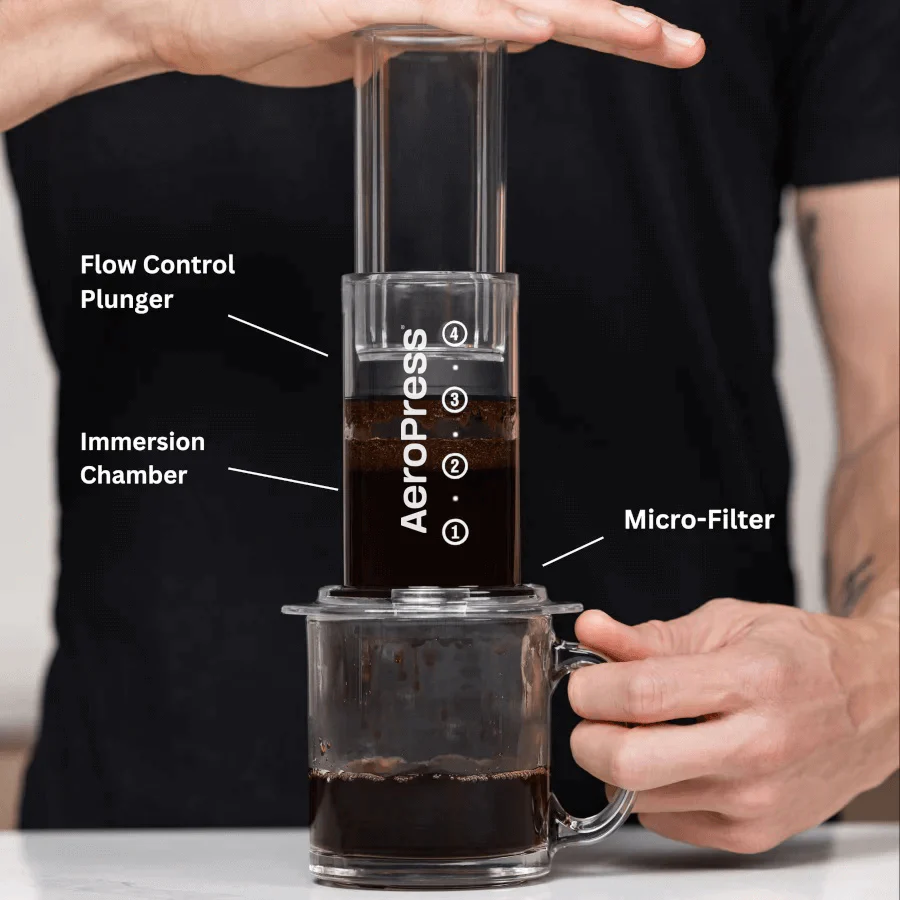
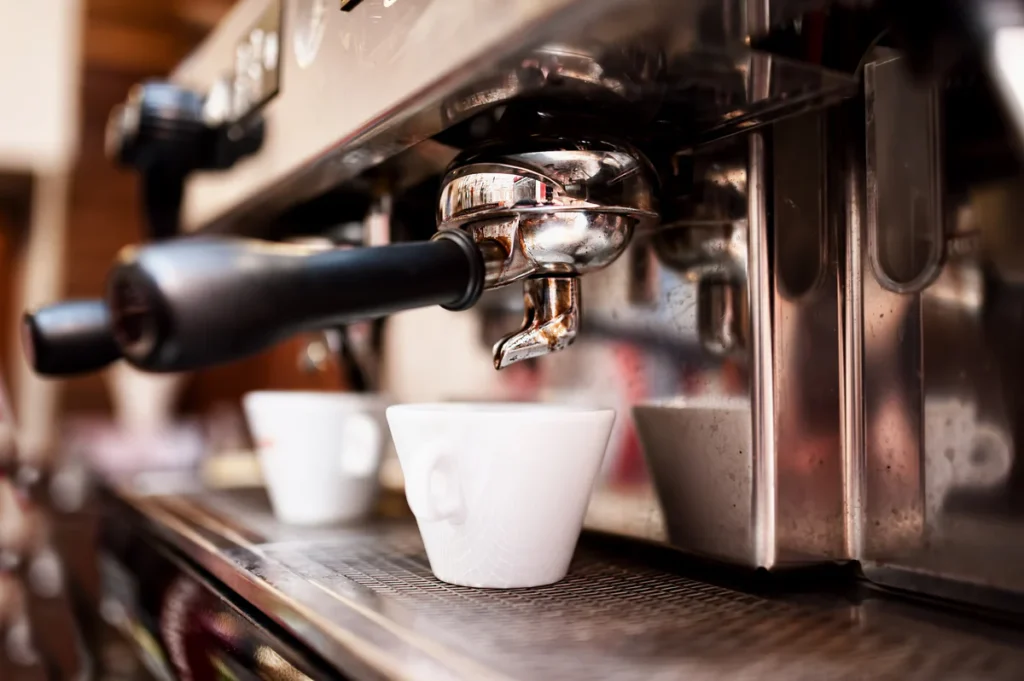
Understanding AeroPress
The AeroPress, invented by Alan Adler in 2005, is a revolutionary coffee brewing device that has gained a cult following among coffee aficionados. Unlike traditional coffee makers, the AeroPress uses a unique combination of immersion and pressure to extract coffee flavors. This simple yet effective device consists of a cylindrical chamber and a plunger, which together create a pressurized brewing environment.
The result? A smooth, rich cup of coffee that highlights the intricate flavors of your coffee beans.
What sets the AeroPress apart from other brewing methods is its versatility and ability to produce a wide range of coffee styles, from espresso-like shots to a more drip-style coffee. The device is also incredibly portable and easy to clean, making it a favorite for both home brewers and travelers alike.

Benefits of AeroPress
The AeroPress offers several advantages that make it a standout choice for coffee lovers:
- Ease of Use: The AeroPress is straightforward to use, requiring minimal setup and cleanup. Its simple design makes it accessible to both beginners and experienced brewers.
- Portability: Lightweight and compact, the AeroPress is perfect for coffee on the go. Whether you’re camping, traveling, or just heading to work, you can easily pack it in your bag.
- Quality of Coffee: The AeroPress can produce a rich and flavorful coffee, rivaling that of more expensive espresso machines. Its unique brewing process ensures a smooth cup without the bitterness often found in other methods.
- Versatility: With the AeroPress, you can experiment with different grind sizes, water temperatures, and brewing times to customize your coffee to your liking.
How to Brew with AeroPress
Brewing with the AeroPress is simple and can be tailored to your taste preferences. Here’s a step-by-step guide to get you started:
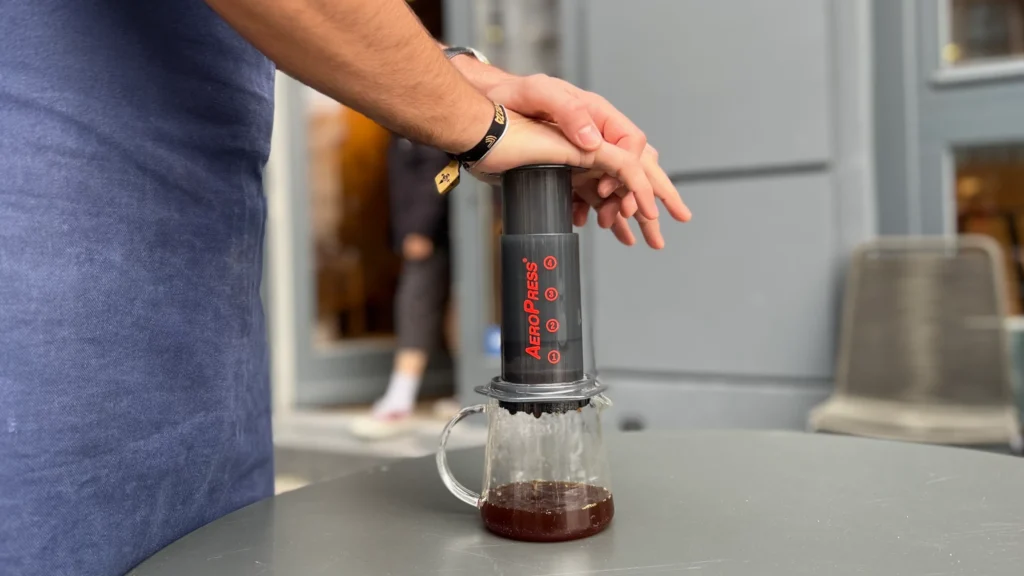
- Prepare Your Equipment: You’ll need an AeroPress, filter paper, coffee beans, a grinder, a kettle, a stirrer, and a mug.
- Heat the Water: Boil water and let it cool slightly to around 175°F (80°C). This temperature is ideal for extracting the best flavors from your coffee.
- Grind the Coffee: Use freshly roasted coffee beans and grind them to a medium-fine consistency, similar to table salt. You’ll need about 14-17 grams (1-2 tablespoons) of coffee.
- Assemble the AeroPress: Place a paper filter in the AeroPress cap and rinse it with hot water to remove any paper taste. Attach the cap to the AeroPress chamber and place it on your mug.
- Add Coffee Grounds: Pour the ground coffee into the AeroPress chamber.
- Pour Water and Stir: Add hot water up to the fill line (around 200ml). Stir the mixture for about 10 seconds to ensure even extraction.
- Insert the Plunger: Place the plunger into the chamber and gently press down. The pressure will force the water through the coffee grounds and filter, extracting the flavors.
- Serve and Enjoy: Once you’ve pressed all the way down, remove the AeroPress, and your coffee is ready to enjoy. Customize with milk, sugar, or enjoy it black.
Experiment with different brewing times and grind sizes to find your perfect cup. The AeroPress’s flexibility makes it an excellent choice for anyone looking to explore the art of coffee brewing.
Understanding Espresso
Espresso, a concentrated form of coffee, originated in Italy in the early 20th century. Luigi Bezzera is often credited with inventing the espresso machine in 1901, which revolutionized coffee brewing by introducing high-pressure extraction. This method produces a small, intense shot of coffee with a rich flavor and thick crema, a creamy foam layer on top. Espresso is not only a beloved beverage on its own but also the base for many popular coffee drinks, including lattes, cappuccinos, and macchiatos.
The cultural significance of espresso is profound, especially in Italy, where it’s an integral part of daily life. Espresso bars are common gathering places where people enjoy quick, social coffee breaks. The art of making espresso, known as barista culture, emphasizes precision and skill, contributing to the worldwide appreciation of this coffee style.

Benefits of Espresso
Espresso offers several benefits that make it a favorite among coffee lovers:
- Rich Flavor Profile: Due to its concentrated nature, espresso delivers a robust and complex flavor that highlights the unique characteristics of the coffee beans. The high-pressure extraction brings out the deep, nuanced flavors that other brewing methods might miss.
- Versatility: Espresso is incredibly versatile and serves as the foundation for numerous coffee drinks. From lattes and cappuccinos to mochas and americanos, the possibilities are endless.
- Quick Preparation: Unlike other brewing methods that may take several minutes, espresso can be prepared in under a minute, making it a convenient option for those who need a quick caffeine fix.
- Enhanced Crema: The thick, creamy layer of crema on top of a well-pulled espresso shot adds a luxurious texture and enhances the overall drinking experience.
How to Make Espresso at Home
Making espresso at home requires some essential equipment and a bit of practice, but it’s entirely achievable with the right approach. Here’s a step-by-step guide:
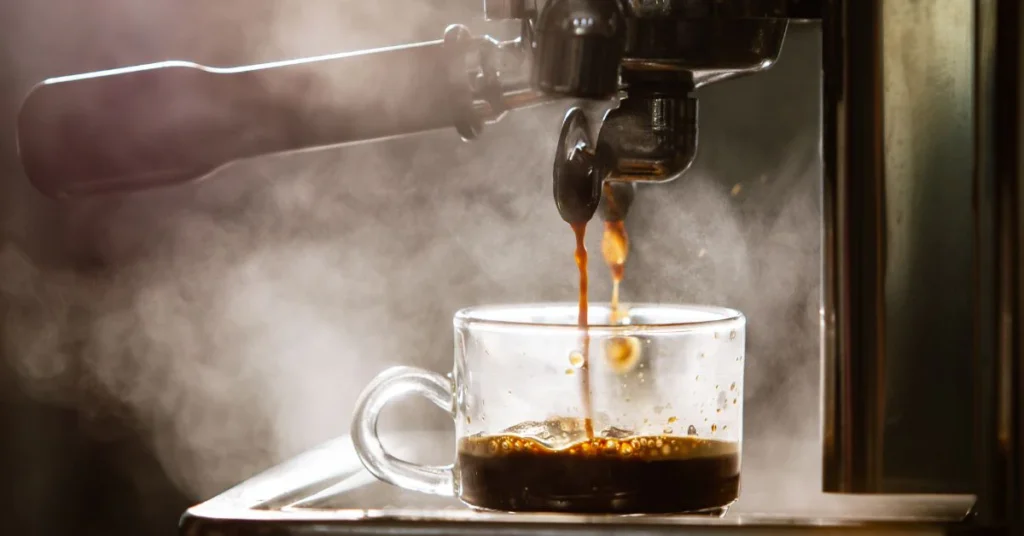
- Gather Your Equipment: You’ll need an espresso machine, a grinder, fresh coffee beans, a tamper, a scale, and a milk frother (if you plan to make milk-based drinks).
- Heat the Machine: Preheat your espresso machine, portafilter, and cup. This ensures a consistent temperature for the brewing process.
- Grind the Coffee: Use freshly roasted coffee beans and grind them to a fine consistency, similar to table salt. Aim for about 18-20 grams of coffee for a double shot.
- Dose and Tamp: Place the ground coffee into the portafilter, ensuring an even distribution. Use a tamper to press the coffee down firmly and evenly, creating a level surface.
- Brew the Espresso: Insert the portafilter into the machine’s group head and start the extraction process. A proper espresso shot should take about 25-30 seconds to pull and yield around 1-2 ounces of liquid.
- Serve and Enjoy: Once the extraction is complete, you’ll have a rich, aromatic shot of espresso. Enjoy it as is, or use it as a base for your favorite coffee drinks.
Tips for the Best Espresso at Home
- Use Fresh Beans: The freshness of your coffee beans significantly impacts the quality of your espresso. Opt for freshly roasted beans and grind them just before brewing.
- Control Water Temperature: The ideal water temperature for brewing espresso is between 195°F and 205°F. Consistent temperature control ensures optimal extraction.
- Practice Makes Perfect: Making great espresso is an art that requires practice. Experiment with different grind sizes, tamping pressures, and extraction times to find what works best for you.
Comparison of Brewing Techniques
When comparing the brewing techniques of AeroPress and espresso, there are several factors to consider, including taste, preparation time, and the skill required. Both methods have their unique approaches and benefits, catering to different preferences and lifestyles.
Taste
AeroPress:
- Flavor Profile: The AeroPress produces a clean, smooth cup of coffee with a balanced flavor. It highlights the subtle nuances of the coffee beans without the bitterness that can sometimes accompany other brewing methods. The flavor can be adjusted by changing the grind size, water temperature, and brewing time, allowing for a wide range of taste experiences.
- Versatility: With the AeroPress, you can experiment with various coffee styles, from a concentrated espresso-like shot to a lighter, drip-style brew. This flexibility makes it an excellent choice for those who enjoy trying different coffee profiles.
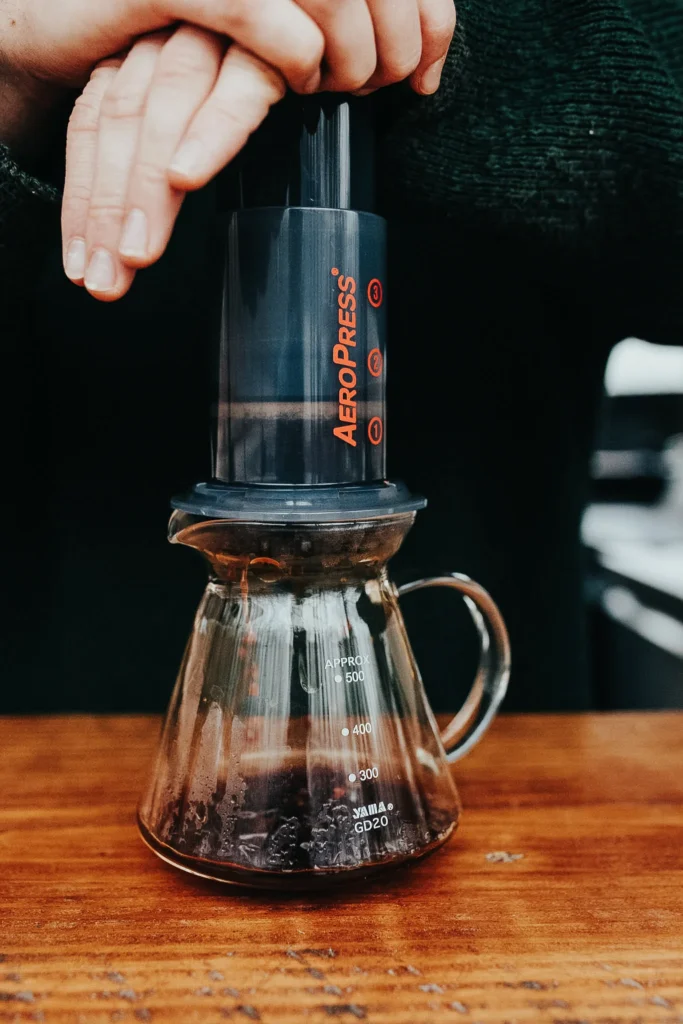
Espresso:
- Flavor Profile: Espresso delivers a rich, intense shot of coffee with a full-bodied flavor and a thick layer of crema on top. The high-pressure extraction method brings out the deep, complex flavors of the coffee beans, providing a more robust and concentrated taste compared to other brewing methods.
- Consistency: Espresso is known for its consistent flavor and texture. Once you master the technique, you can replicate the same high-quality shot every time, making it a favorite for those who appreciate precision and uniformity in their coffee.
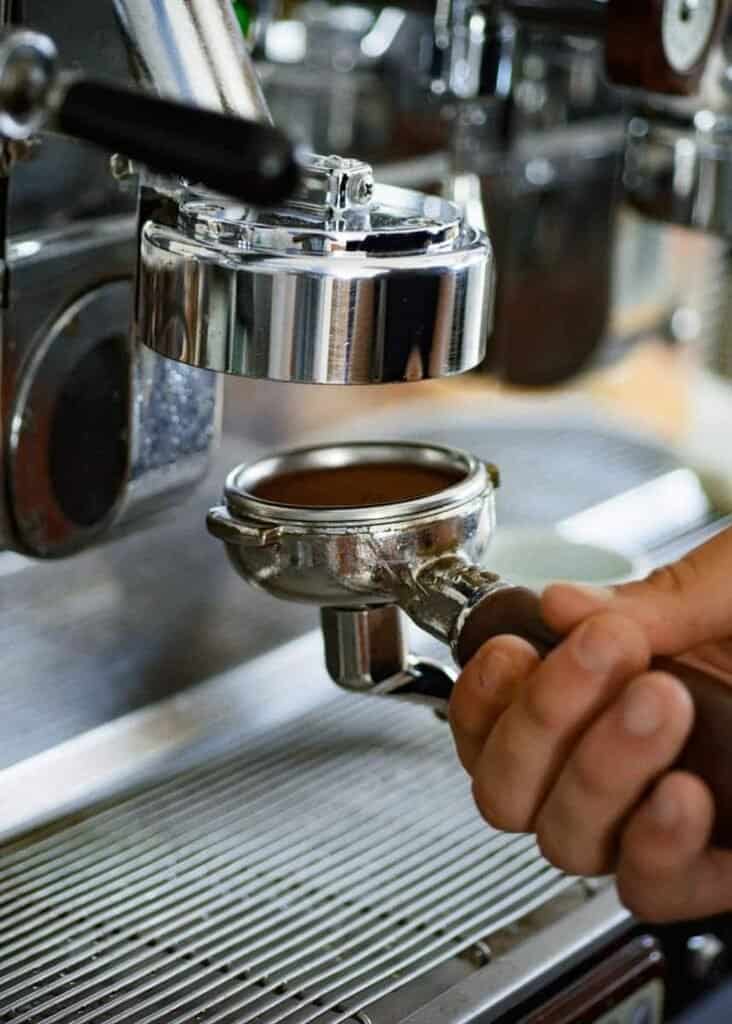
Preparation Time
AeroPress:
- Quick and Convenient: The AeroPress is designed for fast brewing, typically taking around 2-3 minutes from start to finish. This includes grinding the coffee, heating the water, and the actual brewing process. Its simplicity and speed make it ideal for busy mornings or when you need a quick coffee fix.
- Minimal Cleanup: One of the major advantages of the AeroPress is its ease of cleaning. The device disassembles easily, and a quick rinse is usually all that’s needed to keep it clean and ready for the next use.
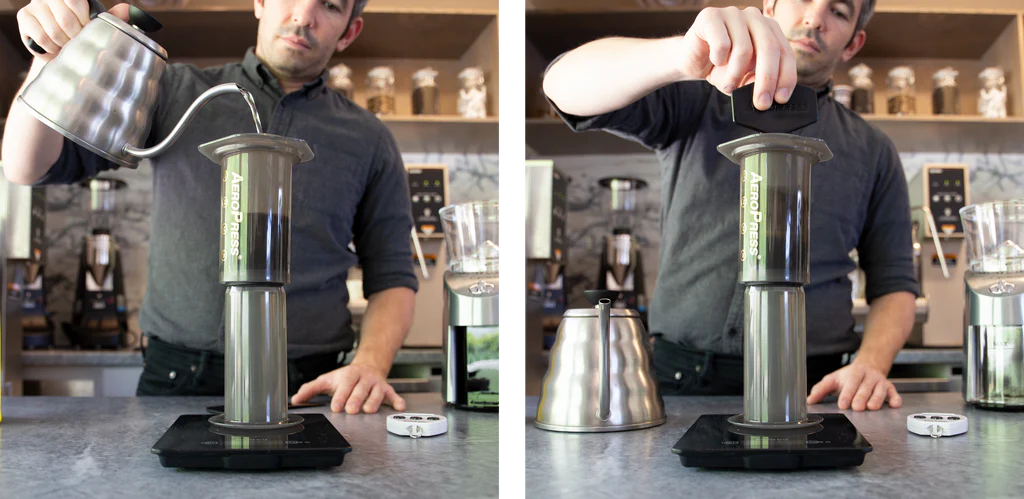
Espresso:
- Longer Preparation: Brewing espresso can take a bit more time, especially if you include the steps of grinding the beans, dosing, tamping, and heating the machine. The actual extraction takes about 25-30 seconds, but the overall process can take around 5-10 minutes.
- Maintenance: Espresso machines require regular maintenance and cleaning to ensure optimal performance. This includes backflushing the machine, descaling, and cleaning the portafilter and group head, which can be time-consuming.
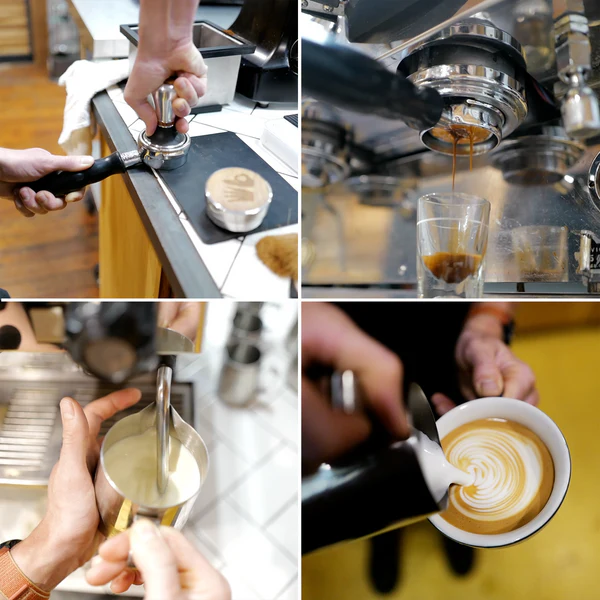
Skill Required
AeroPress:
- Beginner-Friendly: The AeroPress is relatively easy to use, making it accessible for beginners. Its straightforward design and forgiving nature mean that even those new to coffee brewing can achieve great results without extensive training or experience.
- Experimentation: The AeroPress encourages experimentation, allowing users to play with different variables to find their perfect brew. This makes it a fun and educational tool for those who enjoy learning about coffee.
Espresso:
- Advanced Technique: Making espresso requires a higher level of skill and practice. Achieving the perfect shot involves mastering grind size, tamping pressure, and extraction time. Barista training can significantly improve one’s ability to produce consistent and high-quality espresso.
- Precision: Espresso brewing demands precision and attention to detail. Small changes in any part of the process can affect the final result, so it’s essential to understand and control each variable to achieve the desired outcome.
Cost Analysis
When deciding between an AeroPress and an espresso machine, cost is a significant factor to consider. Both the initial investment and ongoing maintenance costs can vary widely between these two brewing methods.
Initial Setup Cost

AeroPress:
- Affordable Entry: The AeroPress is known for its affordability, making it an accessible option for those new to specialty coffee brewing. The cost of an AeroPress typically ranges from $30 to $40. This price includes the main unit, a few hundred paper filters, and a basic stirrer.
- Minimal Additional Equipment: To get started with an AeroPress, you’ll need a few additional items like a coffee grinder (ranging from $20 to $200 depending on quality), a kettle (around $20 to $100), and a scale (optional, $10 to $50). Overall, the total initial setup cost is relatively low, especially compared to an espresso setup.
Espresso Machine:
- Higher Initial Investment: Espresso machines come in a wide range of prices, from entry-level models starting at around $100 to high-end commercial machines costing several thousand dollars. A decent home espresso machine typically falls between $300 and $700.
- Necessary Accessories: In addition to the machine, you’ll need a high-quality grinder (ranging from $100 to $500), a tamper (around $10 to $50), a knock box (around $20 to $50), and possibly a milk frother or steam wand if your machine doesn’t include one. The initial setup cost can quickly add up, making espresso machines a more significant investment.
Maintenance and Operating Costs

AeroPress:
- Low Maintenance: The AeroPress requires minimal maintenance. Regular cleaning is simple and quick, and replacement filters are inexpensive (around $5 for 350 filters). The device itself is durable and long-lasting, so there are no significant recurring costs.
- Operational Costs: The main ongoing expense is the coffee beans. Since the AeroPress uses a relatively small amount of coffee per brew, the cost of beans remains low.
Espresso Machine:
- Regular Maintenance: Espresso machines require more maintenance to keep them in optimal condition. This includes regular descaling (with descaling solutions costing around $10 to $20), backflushing with cleaning tablets (around $10 to $15 for a pack), and periodic replacement of parts like group gaskets and shower screens (costing around $20 to $30).
- Higher Operating Costs: Espresso machines use more coffee per shot, and you may go through beans more quickly, especially if you enjoy multiple shots or milk-based drinks daily. Additionally, the cost of electricity is higher for espresso machines due to their higher power consumption.
Long-Term Value
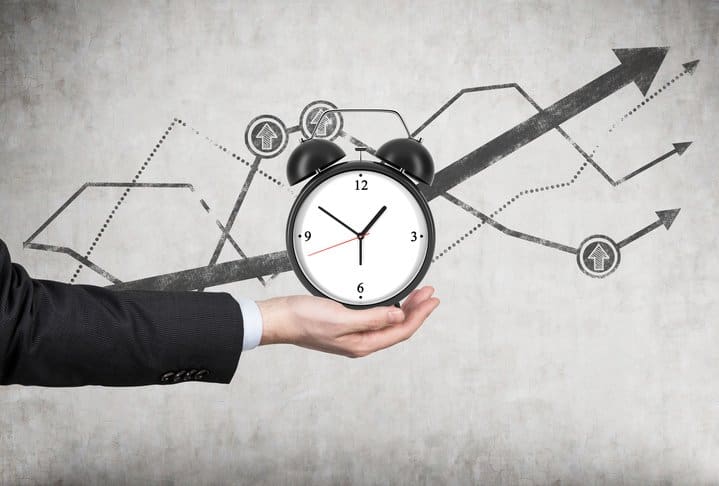
AeroPress:
- Cost-Effective: Over time, the AeroPress remains cost-effective due to its low initial cost and minimal maintenance expenses. It’s a great option for budget-conscious coffee enthusiasts who still want to enjoy high-quality coffee.
- Durability: The simplicity and robust design of the AeroPress contribute to its longevity, offering excellent value for money over the years.
Espresso Machine:
- Investment in Quality: While the initial and maintenance costs are higher, a good espresso machine can last many years with proper care, offering a high-quality coffee experience at home. For serious coffee lovers, the ability to produce café-quality espresso and various specialty drinks justifies the investment.
- Resale Value: High-quality espresso machines often retain their value well, so if you decide to upgrade or sell, you can recoup a significant portion of your initial investment.
Which Should You Choose?
Choosing between an AeroPress and an espresso machine depends on your taste preference, budget, and convenience needs. If you prefer a smooth, versatile coffee and seek affordability and portability, the AeroPress is your best bet. It’s perfect for those on the go or new to specialty coffee. On the other hand, if you crave the rich, intense flavor of espresso and enjoy experimenting with various coffee drinks, an espresso machine is worth the investment.

It’s ideal for those who value precision and are willing to invest time and money into their coffee experience. Ultimately, your choice hinges on balancing taste, budget, and how much effort you’re willing to put into your daily brew.
Aeropress and espresso machine are popular brewing methods, each with its own advantages. The Aeropress is portable and easy to use, while an espresso machine offers a more traditional and richer espresso experience. If you’re curious about alternative brewing methods like using a coffee maker for espresso, read our guide. And for those interested in manual brewing, explore the manual espresso making process.
FAQs on AeroPress and Espresso
Yes, a standard AeroPress brew typically contains less caffeine than a shot of espresso because it uses less coffee per serving and has a different extraction process.
Espresso machines do require regular maintenance, including descaling and cleaning. However, with routine care, they can be kept in good working condition without too much hassle.
While you don’t need special beans, choosing high-quality, freshly roasted beans and grinding them finely will significantly enhance the flavor of your espresso.
Absolutely! The AeroPress is lightweight, compact, and durable, making it an excellent choice for coffee lovers who need their brew on the go.
Disclosure: Our blog contains affiliate links to products. We may receive a commission for purchases made through these links. However, this does not impact our reviews and comparisons. We try our best to keep things fair and balanced, in order to help you make the best choice for you.


